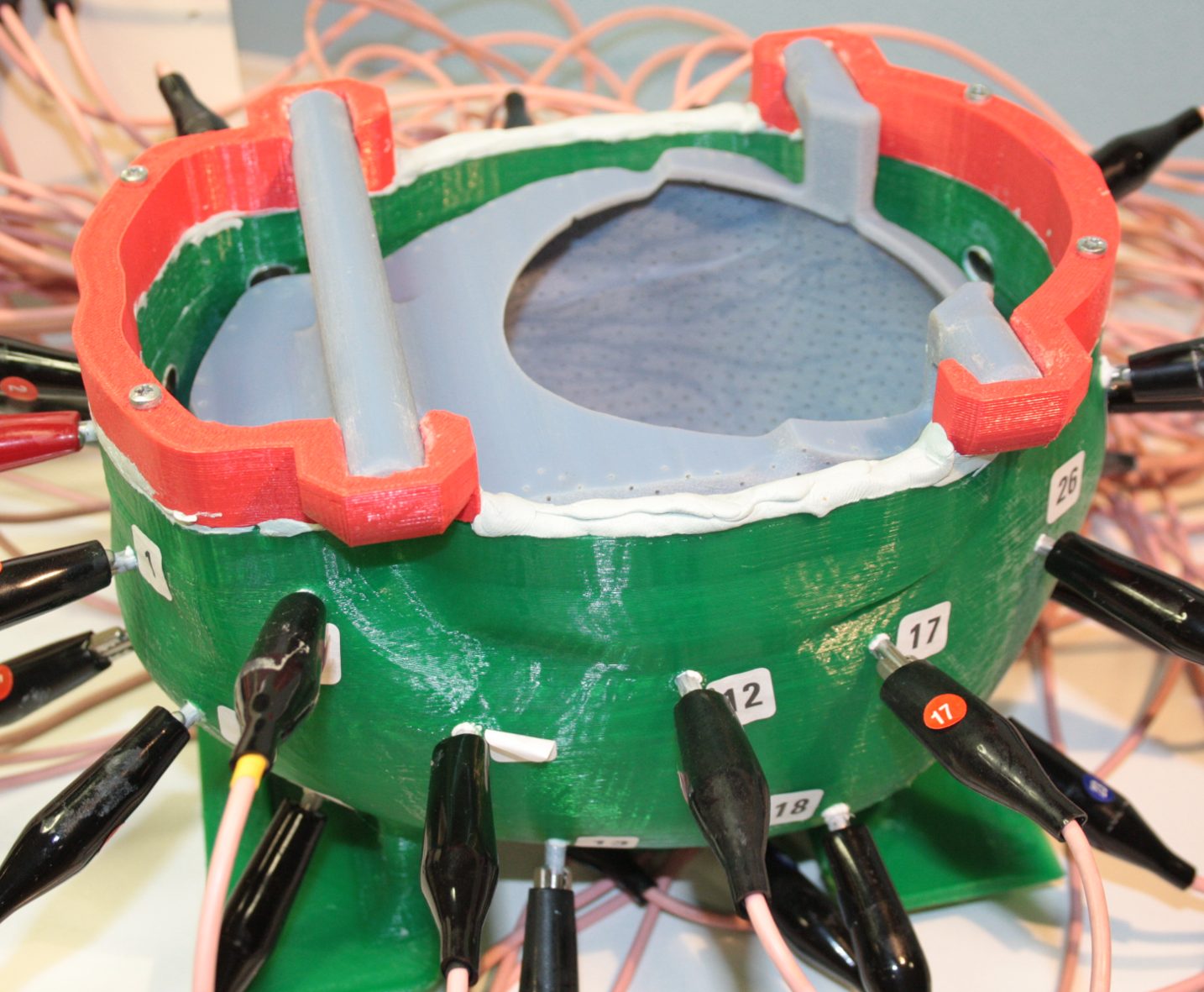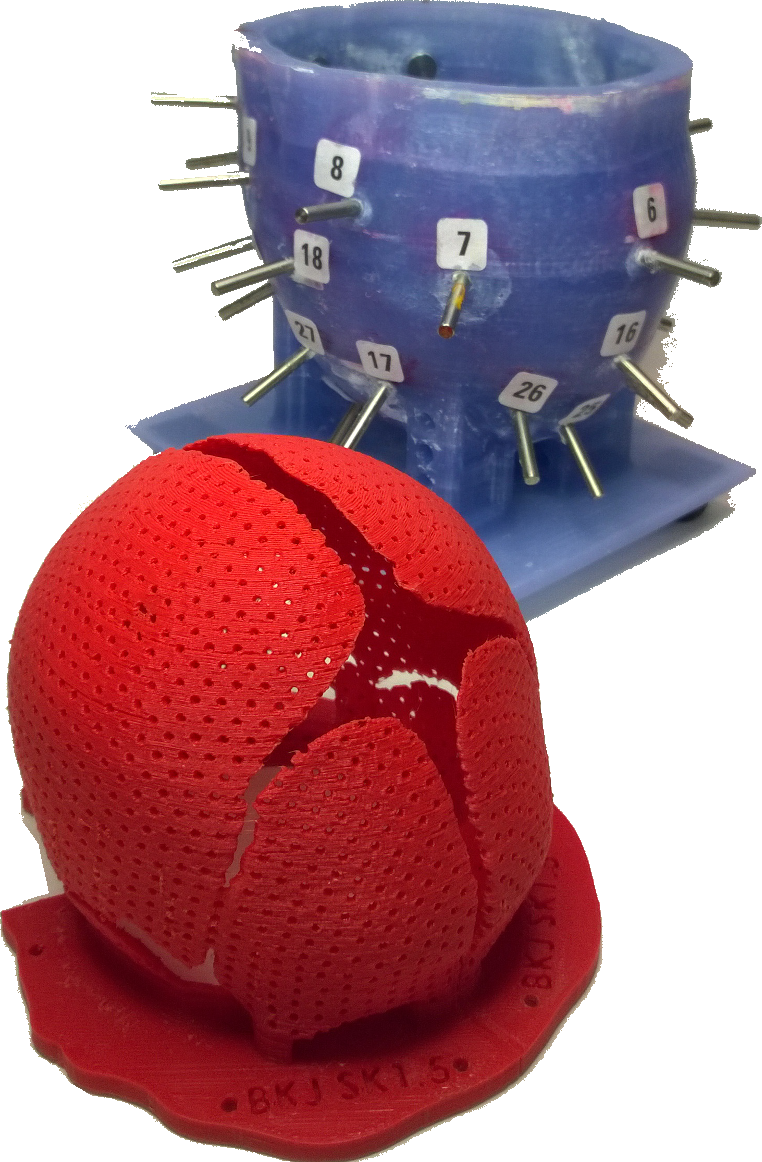These head tanks are designed for Electrical Impedance Tomography (EIT) experiments. They are formed of two parts: a head shaped tank, and a skull. This repository contains both an Adult and a neonatal head tank. The geometry is derived from CT/MRI segmentations. The conductivity of the skull is controlled through surface perforations which allow saline to pass through.
Git lfs is not required to get printable .stl files, only if you want the design files or to edit the electrode positions or the skull conductivities.
If you are interested in making one of these tanks, please create an issue in the repo or email us, we would love to help you!
To make one of these tanks you will need to:
- Print the tank
- Print the skull
- Remove support material from both models
- Get electrodes from somewhere - either stainless steel ones which we had made (We have spares too!), or Ag/AgCl electrodes for the neonatal tank from biomed electrodes
- Insert electrodes in tank (somewhat forcefully) and seal with silicon
- Wait to dry
- Insert skull into the tank
- Fill with 0.2% saline
- Collect EIT data
- Win
The .stl files are found here for the neonate tank and here for the adult tank
If you are using the .stl files provided, without changing the conductivities, geometry or electrode positions, then you can use the Meshes and code to generate the .dgf files for use with here. The files for the Adult tank are here, and here for the neonatal tank.
The accompanying journal article for these tanks is found here
Avery, J. et al., Reproducible 3D printed head tanks for electrical impedance tomography with realistic shape and conductivity distribution. Physiological measurement, 1116.

